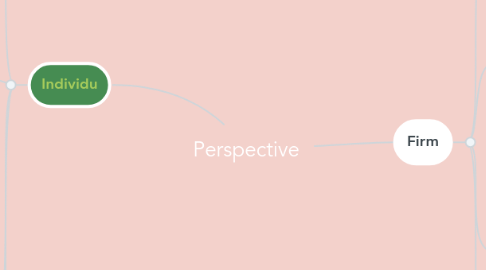
1. Individu
1.1. Personal Commitment An Empirical Examination of a Three- Component Model of Professional Commitment among Public Accountants/ Hall&Smith/ BRIA/ 2008
1.1.1. Independent Variable: NPC (Normative), CPC (Continuance), APC (Affective)
1.1.2. Using questionaire; 7 points Likert scales
1.1.3. there is negative correlation between APC, NPC, and CPC to professional turnover intentions.
1.1.4. Future Research: Consider a wider range of work behaviors, particularly those considered discretionary (e.g., professional involvement, actions beyond minimum compliance with standards)
1.2. Management Accountant Effectiveness (MA Effectiveness) Skills, Influence, and Effectiveness of Management Accountants/ Widener. et al./ Journal of management Acc Research/ 2021
1.2.1. Independent var: Technical skills, interpersonal skills, conceptual skills, combination the two of three. MA Influence (mediasi) Control var: education, age, time through, time out
1.2.2. Tech → MAEFF + Interp → MAEFF + Concept → MAEFF + technical skill helps more effective, but do not help to yield influence with top management If Interpersonal skills↑, conceptual skills ↑, so ability to influence ↑
1.2.3. Questionairre and using Smart PLS
1.3. Individual Performance The effect of horizontal pay dispersion on the effectiveness of performance-based incentives/ Isabella Grabner, et al/ Accounting, Organization and Society/ 2021
1.3.1. Independent variabel: Incentive Intencity Moderasi Var: Pay Dispersion
1.3.2. field study with a for-profit national healthcare firm
1.3.3. intensive intencity ↑, individual performance ↑; pay dispersion ↑ the effect on individual intensive ; perceived fairness in outcome (proxied by position of pay dispersion) → effectiveness individual incentives
1.4. PayFor Performance Career risk concerns, Information Effort, and Optimal Pay-For-Performance Sensitivity/ Dikolli, et al/ Journal of Management Accounting Research/ 2015
1.4.1. Independent variables: Career concerns (CEO Tenure + Age); CEO’s shares in firms; Firms’ Growth Potential; Risk and uncertainty
1.4.2. use analytical procedures
1.4.3. Age CEO ↑, PPS ↑ ; Risk Firm ↑, PPS ↓; Firm Size ↑, PPS ↓ ; Outhired CEO, PPS ↑
2. Firm
2.1. Firm Value Knowledge, compensation, and firm value: An empirical analysis of firm communication/ Rajhan, Madav, et al/Journal of Accounting Economics/ 2014
2.1.1. Independent: Communication, CEO Knowledge, Executive’s Incentives, Compensation Control var: Firm size, Growth, Profitability, Volatility
2.1.2. Our communication measure is associated with compensation, and the alignment of these two measures is associated with higher firm value. Communication patterns in conference calls thus appear to reflect relative knowledge location within the management team.
2.2. Market opinion (price response) Voluntary disclosures, Corporate Control, and Investment/ Sivaramakhrisnan, et al/ Journal of Accounting Research/ 2012
2.2.1. Independent: voluntary disclosure
2.2.2. Result: bad news disclosures lead to a discrete price drop relative to nondisclosure
2.3. Service innovation performance How does customer involvement in service innovation motivate service innovation performance? The roles of relationship learning and knowledge absorptive capacity/Xuemei, et al/Journal of business research/2021
2.3.1. Independent: customer involvement. knowledge absorptive capacity (moderator); relationship learning (mediator);
2.3.2. Use survey research
2.3.3. Customer Involvement related positively to relationship learning and service innovation performance; Customer invovement + konwledge absorptive capacity + relationship learning related positively to service innovation performance
2.4. Firm Performance Target difficulty, target flexibility, and firm performance: Evidence from business units’ targets/ Markus C. Arnold/ Accounting, Organization, and Society/ 2015
2.4.1. Independent : Target Difficulty Mediasi : Target flexibility Control :industry performance, lagged firm performance, firm size, publicly listed
2.4.2. questionnaire data, five point Likert scales
2.4.3. weak evidence because there is no clean association between target difficulty and firm performance (non-linear) target difficulty positive associated with target flexibility.
